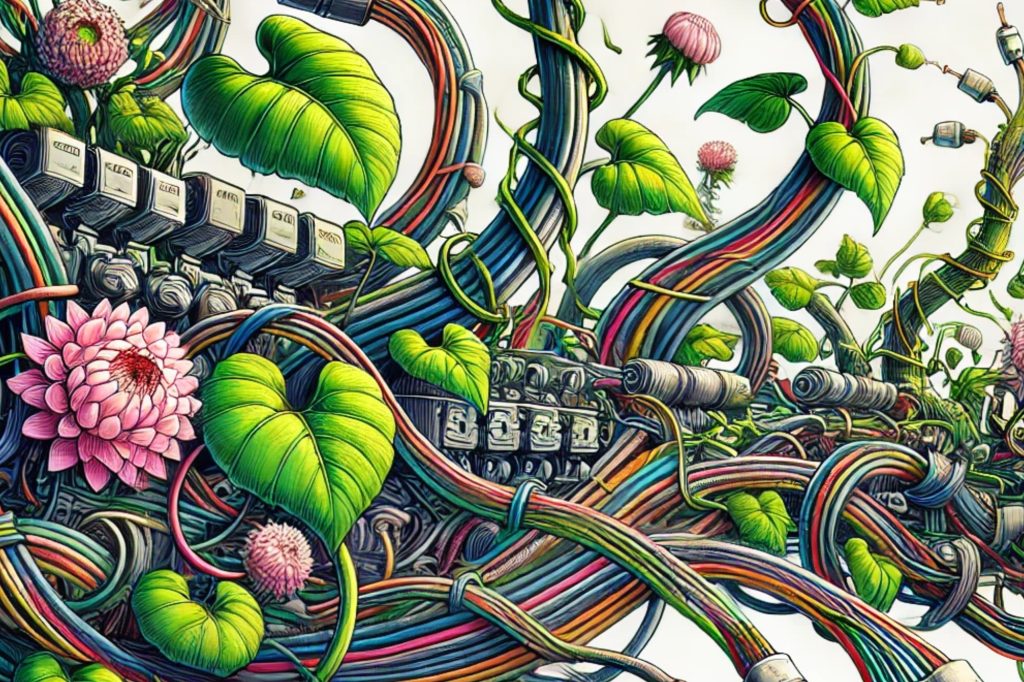Chapter 10: Micronutrients

When you think about performance vehicles, the spotlight usually falls on the big components – engine blocks, turbochargers, transmissions. But it’s the tiny, precise parts – the wiring harnesses, sensors, bearings, filters – that keep the whole system running smoothly. Overlook them, and the whole machine falls apart.
In plants, micronutrients are those essential small parts. Required in trace amounts, they nonetheless play outsized roles in the function and coordination of the plant engine. Let’s take a tour through five of the most critical: iron, manganese, zinc, boron, and copper.
Iron – Wiring the Electron Transport System
Iron is the conductor that keeps energy flowing. It’s a core component of cytochromes in both chloroplasts and mitochondria – proteins that shuttle electrons during photosynthesis and respiration.
These iron-rich proteins make up the wiring of the plant’s electron transport chain. If they fail, the entire electrical circuit of energy metabolism short-circuits. No current, no ATP, no growth.
Iron is also found in ferredoxin, a powerful electron carrier that helps reduce NADP+ to NADPH. Without iron, plants can’t convert light energy into usable fuel.
In vehicle terms, iron is the wiring harness – it doesn’t generate power, but it’s the only way power can get from point A to point B.
Manganese — The Alternator of Photosynthesis
In a car, the alternator keeps the battery charged and the electrical systems running. In plants, manganese performs a similar role – especially in the oxygen-evolving complex (OEC) of Photosystem II.
Here, manganese helps split water molecules, releasing electrons, protons, and oxygen. This is the origin of all plant-based energy flow, and it’s where photosynthesis truly begins.
Manganese also helps Rubisco toggle between its carboxylation and oxygenation modes, acting as a modulator of enzymatic balance. It adjusts output based on metabolic demand, just like a good alternator adjusts voltage to match load.
Zinc – The Bio-Filter and System Cleaner
Zinc is the engine’s internal filtration system. It serves as a cofactor for superoxide dismutase (SOD) and other antioxidant enzymes that clean up reactive oxygen species before they can damage plant tissues.
But zinc’s influence goes deeper. It supports enzyme structure and activity, regulates gene expression, and participates in one of the fastest enzymes in nature: thylakoidal carbonic anhydrase. This enzyme equilibrates CO₂ near Rubisco, making carbon capture dramatically more efficient.
In the engine metaphor, zinc is both the fuel filter and the oil filter – removing impurities and keeping everything running clean.
Boron – The Gaskets and Seals
Tiny as it is, boron is crucial for sealing and stabilizing the plant structure. It cross-links pectic polysaccharides in the cell wall, maintaining integrity under pressure.
Without boron, cells leak, deform, and fail. This is why boron deficiency shows up first in fast-growing tissues – the areas where pressure is highest and structural support must be perfect.
Boron also supports sugar transport and reproductive development, making it essential for fruit and flower formation.
It’s the plant’s equivalent of high-temperature gaskets – sealing the chambers that house critical processes.
Copper – The Ignition Coil for Redox Chemistry
Like iron, copper is part of the plant’s electrical circuitry. It resides in plastocyanin, a mobile electron carrier in the chloroplast, and in cytochrome c oxidase, which powers the final step of mitochondrial respiration.
Copper’s redox flexibility – its ability to gain and lose electrons – is what makes it such a potent conductor. It drives the final push of energy transfer and keeps the oxidative machinery running without breakdown.
It’s not just a wire – it’s a dynamic switch, pulsing with energy flow.
The Takeaway
Micronutrients may be measured in parts per million, but their impact is massive. They wire the circuits, filter the fuel, modulate the voltage, seal the pressure systems, and fire the ignition.
Ignore them, and the engine might still run – but not well. Optimize them, and the plant engine operates with precision, power, and grace.
Next up: Non-Elemental Components – The Advanced Control Systems of Plant Performance.

